The Muscle ( Five Things To Consider For Training Momentum )
Intro
Being At Peace
Nurturing Recovery
Digestion / Food Selection
Exercise Selection
Intensity
Wrap Up
Some old school stuff…
Intro
The first time I put on a significant amount of mass after high school was in college at the Boat School (US Naval Academy) and I did it with Handstand Push-ups, Pull-ups, and One-legged squats. Bodyweight exercise, not used in a warm-up or circuit-like fashion, but treating it as if it were weight training. Low sets (2-3) and low enough reps (8-20ish). I would perform reps till I couldn’t anymore. But I was new to training, young, and could recover from anything. The training advice offered to someone new to training doesn’t need as much detail or be as specific as someone whose been doing it for a few years.
In addition to this, living at this school 24/7 except on weekends, I had very few worries. Our shelter was taken care of and we were spoiled in our chow hall. The amount of food that was probably thrown out daily blows my mind. One of our best meals there was buffalo chicken sandwiches which I’m salivating just thinking about.
Now that I’m older, a little bit crazier wiser, and with more responsibilities this has forced me to do more research, contemplate, and try things I never have before in terms of training my body. For certain age ranges, continued progress can be a thing although its speed can become altered based on our focus or lack thereof of certain things. Here are five that I believe are important.
1) Being At Peace
Stress hampers one’s productive energy. This energy that’s hampered by negative emotions/thoughts will not only decrease one’s performance but also their recovery. If one were to have a productive workout but for the next few days become stressed about something digestion will not be as efficient as the voltage it needs to work properly is being disrupted by negative thoughts. It doesn’t matter how effective one’s training is if stress levels are too high.
Therefore, it’s important to engage in practices that will cause one to be calm throughout the week. Outside of religious practices, my go-to strategies are
Going to a nice park
Grounding(bare feet on grass)
Getting Sunlight(Weather permitting)
Minimizing Man-made EMF
Staying Present
Guarding my thoughts
Insuring my muscles are relaxed
The last one might sound strange. But being aware of what muscles are in a constant state of activation, as well as what thoughts are accompanying them, can help one to relax.
For myself, the muscles connecting my neck to my shoulders, the trapezius, will be slightly activated when I’m stressed about something. For you, it might be something different. Controlling thoughts can be impossible but controlling the body, I’m starting to realize, is a solid path to emotional control. If stressed about something and my traps are activated I relax so that my traps become softer and this most of the time(95.78%) helps with my negative thoughts. The energy given to our negative thoughts in our head can also activate certain muscles.
This is where some form of tension-based training comes in be it Maxalding, Overcoming Isometrics, Yielding Isometrics, or Somatics. Because when you learn how to engage specific muscles, over time you will learn how to disengage them. Take them from a high energetic state to a low energetic state. Control your body to control your mind.
The other bullet points I talk about frequently and they don’t all have to be done at once. But the central theme is to distant one’s self from man-made inventions and get closer to what’s natural. Listen to the bird’s chirp bro.
Special note: This half of the article is geared more towards muscle building but pure strength training can be benefited by many of these principles as well.
A clouded mind will disrupt your growth towards greater strength, muscle, or health.
2) Nurturing Recovery
This point and the next will be a little bit of an extension of the first point. The environment you place yourself in between workouts will also make a big difference in one’s progress.
One of the things I did in college to get to the size I was was a short nap(20-25 minutes) following lunch. Not enough for any deep sleep but enough to calm down and allow my stomach to do its job. Sleeping at night was a little less consistent given the academic workload at this school but I averaged around 6.75 hours a night. But if you’re not a 20-year-old midshipman just know that sleep is a powerful supplement. So if you can’t increase the hours, at least work to increase the quality of it. Some tactics I use now…and you’ll see some repeats are…
Limit the use of my cell phone before bed. Unless I need to contact someone or expect them to contact me I usually put it on airplane mode and keep it a decent distance away from me which will go into my next point…
Minimize Man-Made EMF
Colder temperatures.
Earplugs.
Limiting light...any light
& another one I’ve found beneficial over the past few years…floor sleeping. I know we can sleep on them but I’m not sure if we were ever meant for the giant comfy beds we have today. Some sources would suggest that these comfy beds might be the source of some folk’s back pain and floor sleeping is the cure.
Outside of sleeping, another important part of nurturing recovery is blood flow. Get the nutrients from nature to go where it needs to as well as remove any waste products. Any light activity will do.
Walking
Swimming
Light Calisthenics, meaning high reps(40+) and a significant downgrade/regression from your current level. So if you can do elevated push-ups and you are sore from that workout, try some wall push-ups to get the blood flowing…
This is what’s referred to as, “Active Recovery.” It shouldn’t be strenuous it should be pleasant.
Blood flow/“Active Recovery” can be done with some form of tension-based training as well which brings up an important point which is muscle damage/soreness. When you first start working out you should feel some soreness for the first couple of sessions. Afterwards, it should be very minimal.
“However, evidence suggests that degenerative damage of myofibers is not necessary for MuSC[muscle satellite cells] activation/proliferation during hypertrophy. When considering MuSC-based therapy for atrophy, including sarcopenia, it will be indispensable to elucidate MuSC behaviors in muscles that exhibit non-degenerative damage, because degenerated myofibers are not present in the atrophied muscles.” (sciencedirect.com/scien…) 2020
Muscle damage/soreness is not an important indicator of the growth process being triggered although some of yall might have heard that it was somewhere. The growth process can be triggered without soreness. This is something the old-timers knew well.
“Strenuous muscular work does not build muscle. If it did, the hardest workers, particularly those who start in childhood, would be the biggest and strongest people. But the reverse is actually the case, because strenuous training and hard labour actually break down the muscular tissue.
We know that there are the rare cases of men who are able to train strenuously and show good physical development. But such persons are possessed of extraordinary powers of recuperation and they would get better results from more scientific methods of training. Some men are vitally strong enough to withstand several years of hard wear and tear on the organs, and it is these rare cases that are held up by advocates of strenuous training as proof of the efficacy of such training.” - Court Saldo(Maxalding), 1950
Ways to achieve high muscle damage, for those sadists out there, is
Short rest periods
Too many reps
Too high of a stretch in the working muscles during dynamic movement. Some stretch(Lengthened Partials) is good like what you see here but don’t go overboard.
So if you don’t want to damage your muscles and become sore do almost the opposite of what’s above.
Long rest periods (4-5 Minutes)
The appropriate amount of reps and sets
No excessive range of motion. Only go as far as any compound(multi-joint) movement will allow. Be careful with isolation movements as these are the ones you can go overboard with. More on this next week.
At the end of the day, kick off the muscle/connective tissue adaptation process and give your body the right environment to do its thing.
3) Digestion
It doesn’t matter how much you eat but how much you digest. The points prior will help you to lay a solid foundation but what food you choose matters. Each of us is different when it comes to which foods are digestible. My best advice is to play around with it and find out which types of food give you the most problems after you eat it…then avoid it.
Whenever I would cook I would always have some type of protein, fats, carbs, and veggies. The exact percentages I would play around with between each meal. For myself, a high-protein diet(mostly carnivore) tends to lean me out. More carbs than necessary tend to make me look a little softer. If you’re not familiar with which is which I have some lists down below.
High protein foods…
Meat
Eggs
Dairy
Beans/Lentils
Nuts
& Seafood
Complex carbs
Potatoes
Various Grains
Vegetables…
Broccoli
Carrots
Eggplant
Cauliflower
Fats…
Avocado
Butter…real butter
& oil…
….The natural stuff like Olive Oil. Not anything processed like seed oils. Fruit oils are fine.
Throw in some protein, veggies, carbs, and a little bit of fats that you can easily digest and you’ll be fine. Organ meats are very nutrient-dense so if you’re confused about it all consider adding some liver or heart into your meals in small portions.
4) Exercise Selection
High muscle activation is the name of the game. Whether it’s facilitated by the right movement or generated yourself. As long as tension stays on the muscle and no focus needs shifting over to balance you are good…at least in the beginning. Some calisthenics movements might be difficult to balance in the beginning but once the practitioner becomes proficient that same movement can be used for strength or muscle building.
This need to focus on more tension versus balance is why some use gym machines. However, too much focus on strength or muscle without some balance in there creates unbalance in your capabilities.
This is why many of the Maxalding folks lifted weights or performed advanced bodyweight exercises. Sure, all that mass and tone is nice, but without coordination is mostly useless. Show muscle…not go muscle.
In terms of calisthenics, choose a movement that you can do no more than 12 repetitions for the upper and no more than 20 for the lower body. These rep ranges aren’t exact…no rep range is exact. For there are times when strength can influence your endurance and vice versa.
The speed with which you move is up to you. Some like going slow on the lowering portion, the eccentric, and speeding up the lifting phase. But this is more based on the muscle-damage-for-growth paradigm. For myself, I’ve found that slower reps meaning two seconds down, one-second pause, and two seconds up have always worked well for me. #(2:1:2) For beginners, this slower tempo also helps them to have better technique for their calisthenics. I’ve seen some training modalities focused on the elderly that call for even slower rep tempos. But the (2:1:2) should work well for everyone in the beginning.
Also, throw in some calisthenics regressions with higher reps(20-30) once in a while for you beginners.
In terms of any tension-based training, you would want your muscles activating powerfully and performing multiple reps after that in quick succession until you feel some fatigue set in. This can be done with short-duration muscle activation (2-4 seconds) or longer (8-12 seconds). As long as you’re doing it multiple times and you start to feel the fatigue set in, you’re good.
For overcoming isometrics some sources call for multiple 20-45 seconds activations for growth but I’ve stated in a few places how this is based on the assumption that it is only our muscles doing the contracting during overcoming isometrics. If you wanna try an overcoming isometric squat for 20 - 45 seconds be my guest.
5) Intensity
The great secret of developing strength is to do so in a way which will store up energy instead of dissipating it, and build up stamina as well.” Alexander Zass (The Amazing Sampson)
I think we’ve been conditioned to go overboard with intensity in our workouts.
Pushing yourself till you drop looks good for Instagram, and can be good for mental toughness, however by engaging in such training you’re digging a hole that will take a while to recover from. The body is intelligent and can be coaxed into greater strength and more muscle. History has proven this. Each workout should feel like you did something but not enough that you feel crushed for the rest of the day or week. This is for both micro workouts and the standard long-duration session a few times a week. Here are some signs that your workout did something…
Higher heart rate than when you’re at rest
Higher body temperature (depending on the climate sweating doesn’t have to happen)
Slightly larger muscles due to a temporary increase in blood flow aka “The Pump.”
Some fatigue, lactic acid, or lethargy in the muscles. I say, “some” because based on your workout schedule you should feel back to normal in a few minutes(micro workouts) or a few hours(normal workouts)
This might take a few sessions to get the hang of but over time you will be able to engage in a workout and reach that, “Stimulus Point” and then back off.
Wrap Up
For those who like to train anywhere…or are broke you don’t have to miss out on the muscle and strength the average gymgoer achieves. If you do it right you might surpass them. Send the appropriate signal and give your body the right environment( both internal and external) to keep going. You’ll be pulling yourself up in no time…
Thank you for reading through this section and take care…
The Nerve ( Some Sickness Observations )
I haven’t really kept up to date with any of the MAHA stuff for I have certain dark perspectives on the state of everything. The only thing I hear now are folks being more aware of seed oils and processed food which is great. With all the things that pop into the public domain, I always have to ask,
“Why now?”
Is it another thing that’s thrown out there to have the plebs arguing while something else in the shadows is being built up?
The reason I ask is that compared to the last 10 years of my life, the last few months have been less than ideal but it's been partially freeing.
However, I developed a little bit of a chill the other week.
Not chill as in I’m a cool guy to hang out with, but periods with which my body felt cold. Add on top of this a little cough. It wasn’t that bad and I was still able to train although I only did with muscle contractions and almost no calisthenics. I figured if my body is low on energy I might as well try to increase it little by little.

It might have been a placebo effect but I think it worked. This was on top of the usual things I do to get my body back to homeostasis.
The last time I got chills, aches, and cough like this was back near the start of the EMF/Havana Syndrome Extravaganza pandemic. That time was more severe. The terrain perspective coupled with an electric understanding of the human body has helped me immensely these past few years.
The terrain paradigm is about us not getting sick through microbes, but through the toxins in our environment, food, or negative thoughts as they can be a form of a toxin to our bodies. Our body responds to these toxins expelling them from our bodies the best way it can or possibly making other corrections.
The price of everything is going up but at the same time, there’s this growing interest in the quality of our food. But how many of these folks acknowledge the electrical nature of the human body? Or the role of natural light in our health? If you do all of these then I have no “Beef” with you lol. It’s important to, “Vote with our dollars” but what about those with few dollars to spend?
Just something I’ve been thinking about. The best option is to get to the point where you can grow your own food. Which I hope to get to one day…
Where the terrain paradigm can’t be fully lived out maybe compensating with the energy/electric might help.
"I only became a weightlifter in order to prove that the “control of the muscles” was the greatest consideration in the performance of feats of strength; and I reason, with obvious logic, that if I am able to perform feats of strength far beyond anything ever accomplished by the most scientific lifter at my weight, by controlling the muscles, I can put that power to a much greater use; in fact, to the greatest use of which this world is in need—to the curing of disease" (Maxick 7, How To Become A Great Athlete)
Some say you can’t out-train a bad diet. But whoever first came up with that phrase I’d ask them to define training because how you train might matter more than the diet.
“I had plenty of time to carry out my ideas. In fact, I had nothing else to do. And one of the things I speedily discovered was that for many hours could this kind of physical stimulation be kept up. Instead of wasting energy, this, on the contrary, was retained. Which was fortunate for me, in more ways than one, when the position I was in is remembered. For I did not get too much to eat, I must tell you, and what I did get was not of the most nourishing nature. And so I continued for about three months, gradually recovering my lost development and adding appreciably to my depleted strength and energy.” (p 116 Amazing Sampson)
If you train in a way that is more stimulating than annihilating to your muscles and body, it’s possible to decrease your independence on too much food. Heck based on accounts from dudes in prison who are in the calisthenics community now, you might not have to be dependent on the right food. As with what I wrote in the first section it will be important to gauge which Frankenstein food gives you the most problems and avoid. Not ideal but for some folks, I believe as we start traveling down this inflation/technocracy path, taking the path of out-training a bad diet through energy-efficient workouts might be necessary.
Thank you for making it to the end and let me know your thoughts.
Until next time…




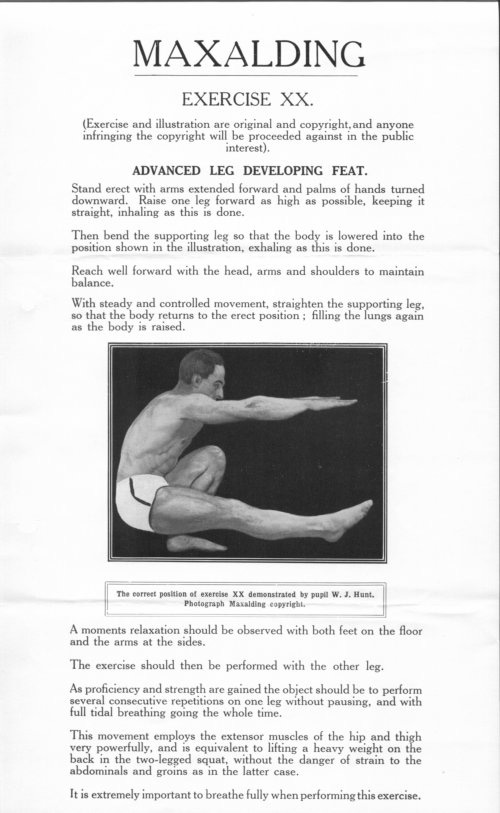
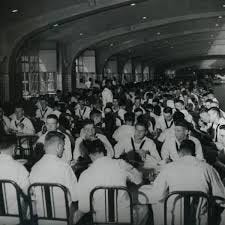











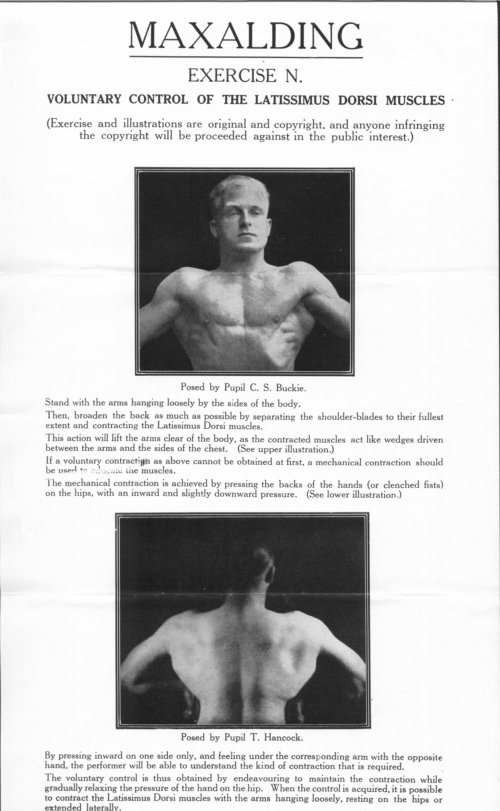
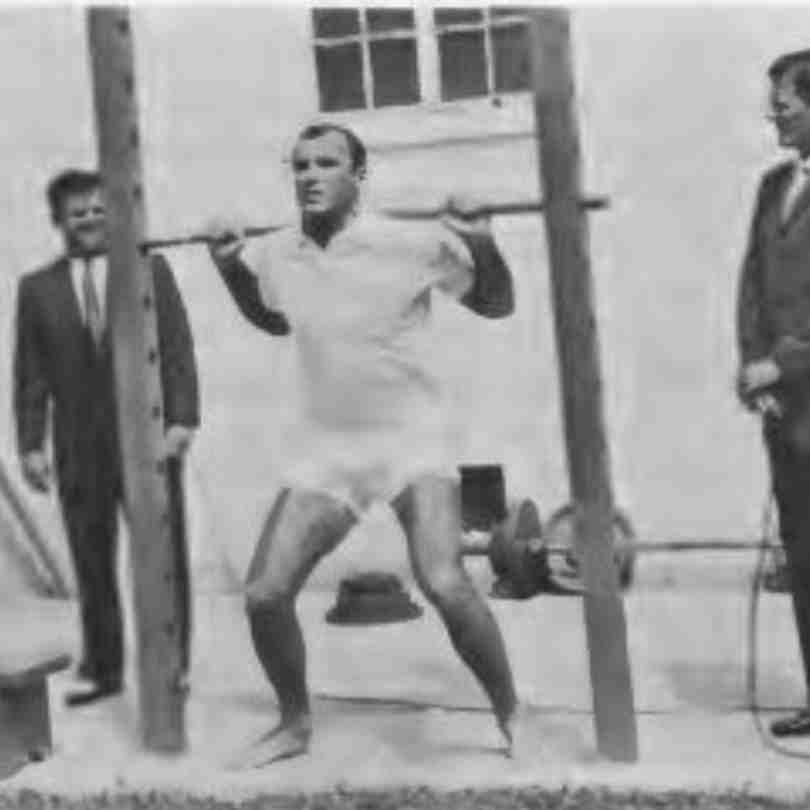





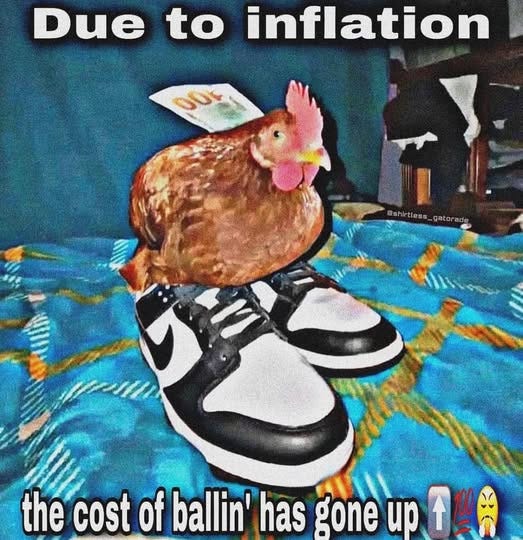

When I try doing that advanced leg exercise (pike squat?) in the pic...taking 5 min breaks for me definitely helped reset my balance. I also needed to be barefoot for better balance - it's a tough one! How long did it take you to get good at this and get all the way up and down?